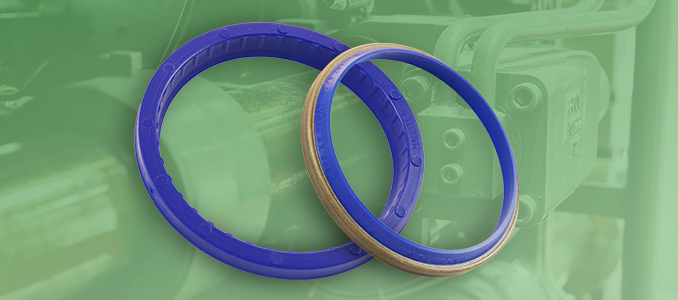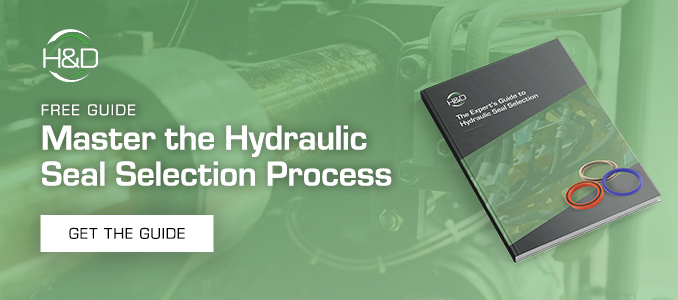by Russell Wood
Wiper seals are an important part of keeping a hydraulic cylinder running smoothly. Their role in protecting the cylinder from contamination cannot be overlooked, so knowing how to choose the best wiper seal for your application is an important part of avoiding costly downtime. Taking time to consider these three basic details will put you on the right path.
And if you want more information on the topic, please download your free copy of our "Expert's Guide to Hydraulic Seal Selection," which covers important criteria for choosing wiper seals, piston seals, and rod seals, among others.
1. Application Requirements
What requirements does your application dictate for your wiper? Will it be working in a high-temperature environment? What are the anticipated pressure or friction requirements? These, and other specifications unique to your application, are the first step in considering the best wiper for your needs.
2. Environmental Concerns
Because keeping contaminants out is the primary job of a wiper seal, understanding the type of environment in which your wiper will be working is important. Will your contaminants be primarily related to moisture or are there other environmental concerns specific to your application?
3. Seal Dimensions
Knowing that your wiper dimensions are compatible with your rod is the best way to ensure that contamination is minimized. These details will guide you in the choice of material for your wiper seal.
Wiper Seal Selection Decision Tree
Even with a solid grasp of the above considerations, choosing the best wiper seal can be time consuming. Using the framework outlined above, you can use the following diagram to narrow down your choices to just a few options.

Here’s how it works:
- Start at the top left corner. Answer the first question: Is your wiper a snap-in or a press-fit? Let’s assume that we are looking for a snap-in wiper.
- Following the line, we come to our next question: Is a redundant sealing lip required? In this case, let’s say a redundant sealing lip is required for our application.
- Again, following the path in the diagram, we come to the next question: Is low friction required for this wiper? If the answer is “yes,” it is pretty easy to determine that an E2/E5 wiper is likely what you need. However, if the answer is “no,” there are still several wipers to choose from. Each square has a profile image of the wiper option, which can help you narrow your search.
Sourcing the Right Wiper Seal
Even with the insights and decision tree provided here, your chances of finding the right wiper seal are always going to be best when you work with experts.
That’s why we recommend consulting with an experienced seal engineering professional as the final step in selecting the best wiper seal. If you’d like to ensure that you select the right wiper, the first time, we would love to help!
Contact us and we’ll put you in touch with one of our engineers.
About H&D Distributors
For over 40 years, H&D Distributors has provided expert sealing solutions for OEM and MRO customers in various industries where productivity is key, including hydraulics, oil and gas, and semiconductor. Leveraging in-house engineering and testing expertise, exceptional customer service, and a global network of top sealing manufacturers, H&D's goal is to deliver solutions for its customers’ pressing sealing challenges expertly, accurately, and on time.
 |
About Russell WoodRussell Wood, General Manager at H&D, leads the H&D Technical Team as well as its Inside Sales Team. He has over 30 years of experience in the seal industry. |





